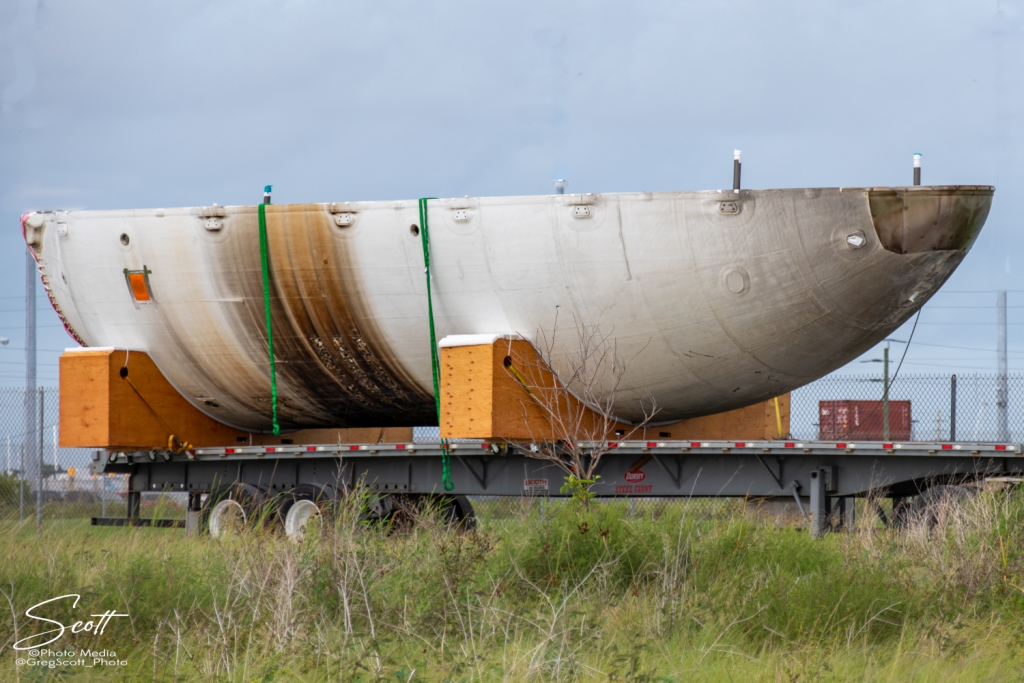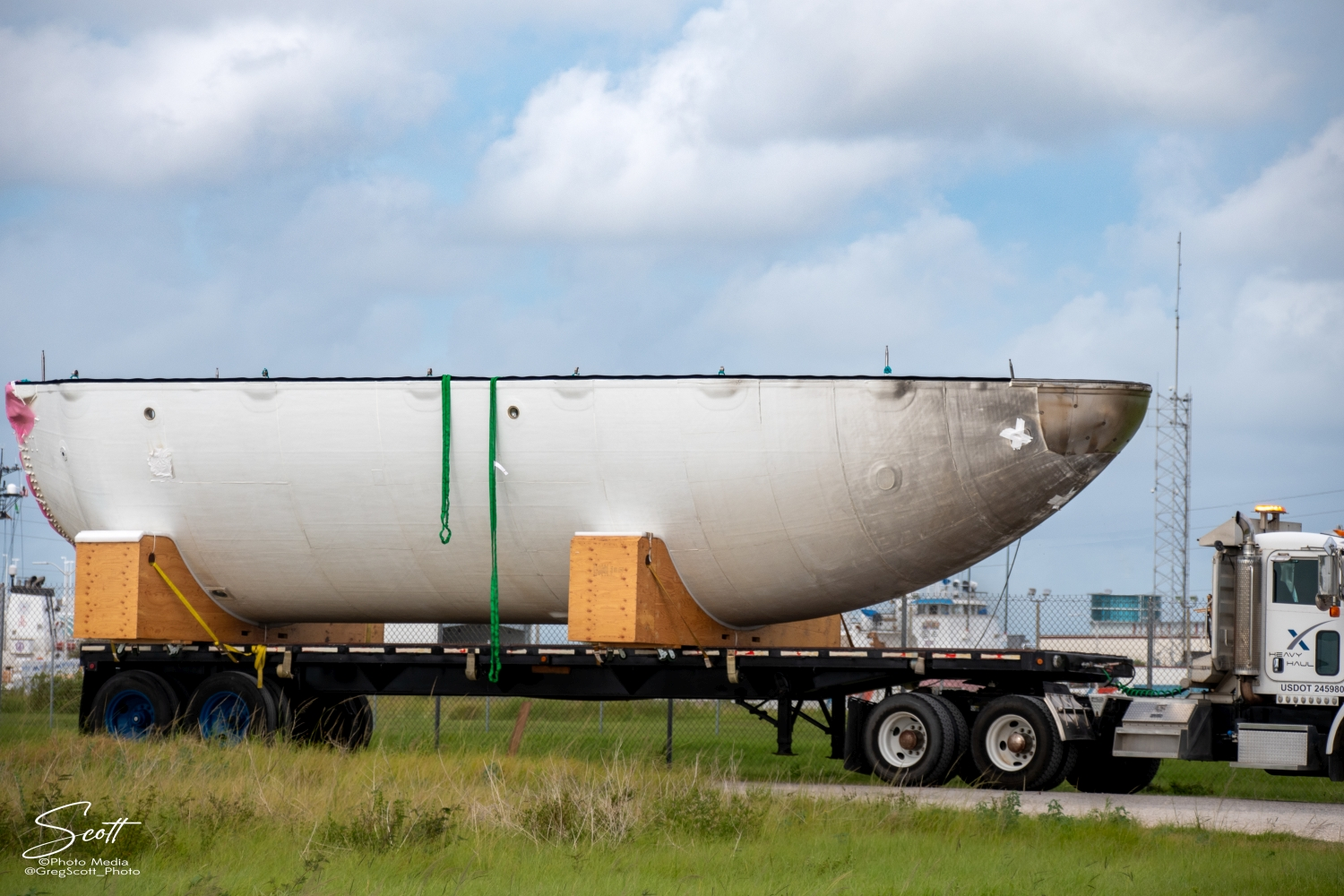
Satria | Falcon 9 Block 5
Featured image credit: SpaceX
Lift Off Time(Subject to change)
Mission Name
Launch Provider(What rocket company is launching it?)
Customer(Who’s paying for this?)
Rocket
Launch Location
Payload mass
Where are the satellites going?
Will they be attempting to recover the first stage?
Where will the first stage land?
Will they be attempting to recover the fairings?
Are these fairings new?
How’s the weather looking?
This will be the:
Where to watch
What’s This All Mean?
SpaceX’s Satria mission will launch the Satria satellite for Pasifik Satelit Nusantara atop a Falcon 9 rocket. The Falcon 9 will lift off from Space Launch Complex 40 (SLC-40), at the Cape Canaveral Space Force Station, in Florida, United States. Satria will be placed into a geostationary transfer orbit, where it will spend the following months raising its orbit to the 146-degree East Geostationary Earth Orbit slot.
What Is Satria
Satria is a very high throughput communication satellite built by Thales Alenia Space for Satelit Nusantara Tiga consortium. This payload will provide 90,000 schools, 40,000 hospitals, and many other residential and governmental sites with 150 gigabit per second coverage. The satellite is built on the Spacebus-Neo-200 fully electric spacebus, which was fitted with a fifth-generation digital processor. Satria has two deployable solar arrays and batteries to power the satellite. It has an on-orbit lifespan of 15 years.
What Is Falcon 9 Block 5?
The Falcon 9 Block 5 is SpaceX’s partially reusable two-stage medium-lift launch vehicle. The vehicle consists of a reusable first stage, an expendable second stage, and, when in payload configuration, a pair of reusable fairing halves.
First Stage
The Falcon 9 first stage contains 9 Merlin 1D+ sea-level engines. Each engine uses an open gas generator cycle and runs on RP-1 and liquid oxygen (LOx). Each engine produces 845 kN of thrust at sea level, with a specific impulse (ISP) of 285 seconds, and 934 kN in a vacuum with an ISP of 313 seconds. Due to the powerful nature of the engine, and the large amount of them, the Falcon 9 first stage is able to lose an engine right off the pad, or up to two later in the flight, and be able to successfully place the payload into orbit.
The Merlin engines are ignited by triethylaluminum and triethylborane (TEA-TEB), which instantly burst into flames when mixed in the presence of oxygen. During static fire and launch the TEA-TEB is provided by the ground service equipment. However, as the Falcon 9 first stage is able to propulsively land, three of the Merlin engines (E1, E5, and E9) contain TEA-TEB canisters to relight for the boost back, reentry, and landing burns.
Second Stage
The Falcon 9 second stage is the only expendable part of the Falcon 9. It contains a singular MVacD engine that produces 992 kN of thrust and an ISP of 348 seconds. The second stage is capable of doing several burns, allowing the Falcon 9 to put payloads in several different orbits.
SpaceX is currently flying two different versions of the MVacD engine’s nozzle. The standard nozzle design is used on high-performance missions. The other nozzle is a significantly shorter version of the standard, decreasing both performance and material usage; with this nozzle, the MVacD engine produces 10% less thrust in space. This nozzle is only used on lower-performance missions, as it decreases the amount of material needed by 75%. This means that SpaceX can launch over three times as many missions with the same amount of Niobium as with the longer design.
For missions with many burns and/or long coasts between burns, the second stage is able to be equipped with a mission extension package. When the second stage has this package it has a grey strip, which helps keep the RP-1 warm, an increased number of composite-overwrapped pressure vessels (COPVs) for pressurization control, and additional TEA-TEB.
Falcon 9 Booster
The booster supporting the Satria mission is B1067-12; as the name implies, the booster has supported 11 previous flights. Upon successful landing, its designation will change to B1067-13.
Following stage separation, Falcon 9 will conduct two burns. These burns aim to softly touch down the booster on SpaceX’s autonomous spaceport drone ship A Shortfall of Gravitas.
Falcon 9 Fairings
The Falcon 9’s fairing consists of two dissimilar reusable halves. The first half (the half that faces away from the transport erector) is called the active half, and houses the pneumatics for the separation system. The other fairing half is called the passive half. As the name implies, this half plays a purely passive role in the fairing separation process, as it relies on the pneumatics from the active half.
Both fairing halves are equipped with cold gas thrusters and a parafoil which are used to softly touch down the fairing half in the ocean. SpaceX used to attempt to catch the fairing halves, however, at the end of 2020 this program was canceled due to safety risks and a low success rate. On Satria, SpaceX will attempt to recover the fairing halves from the water with its recovery vessel Doug.
In 2021, SpaceX started flying a new version of the Falcon 9 fairing. The new “upgraded” version has vents only at the top of each fairing half, by the gap between the halves, whereas the old version had vents placed spread equidistantly around the base of the fairing. Moving the vents decreases the chance of water getting into the fairing, making the chance of a successful scoop significantly higher.



Satria Countdown
All times are approximate
Satria Launch, Landing, and Deployment
Link nội dung: https://pmil.edu.vn/satria-2023-a11190.html